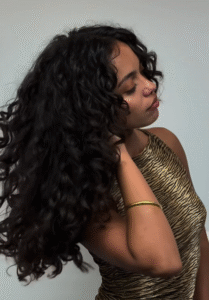Curly hair has always been striking—spirals, coils, and waves that catch the eye and demand attention. Yet for many, it was once a source of struggle rather than pride. From school days filled with teasing to professional environments that favored sleek styles, curls were often straightened, hidden, or chemically altered. The result was damaged strands and a sense of defeat. But today, curly hair is undergoing a global transformation—one that celebrates natural texture as a symbol of beauty, strength, and authenticity.
The foundation of this change lies in understanding curly hair’s unique needs. Because curls bend and twist, natural scalp oils cannot travel easily down the strand. This leaves curls drier and more fragile than straight hair. Traditional shampoos only worsened the problem by stripping away moisture. The modern solution is hydration. Sulfate-free cleansers gently wash without damage, rich conditioners bring back softness, and deep masks restore strength. Natural oils—like coconut, argan, and jojoba—lock in shine, giving curls the bounce and resilience they need.
Styling has also been reinvented. In the past, the goal was often to tame or flatten curls. Today, people are learning to work with their texture instead of against it. Techniques like finger-coiling, plopping, and twist-outs enhance natural spirals, while diffusing with low heat adds volume without harm. Curl creams, mousses, and lightweight gels provide hold without crunch, making hair soft and touchable. Protective styles such as braids and buns add variety while keeping curls healthy.
The cultural shift has been just as powerful as the routines. Social media platforms have given curly-haired individuals a voice and a community. Before-and-after photos and tutorials inspire millions, proving that transformation is possible. Representation in film, fashion, and advertising has also made a difference. Where curls were once hidden, they are now front and center, sending a strong message: natural texture is professional, stylish, and beautiful.
For many, the emotional impact of embracing curls has been profound. What was once a source of embarrassment is now a symbol of confidence. People describe feeling liberated when they stop fighting their texture and begin celebrating it. Parents are teaching their children to love their curls early, ensuring that new generations grow up proud rather than insecure. This legacy of self-acceptance is reshaping how curls are viewed in families, communities, and industries.
Ultimately, curly hair transformation is about more than beauty—it is about identity. Each curl tells a story of resilience, individuality, and strength. When cared for with love and worn proudly, curls become more than hair—they become a radiant crown of authenticity.
The world is learning what curly-haired people are embracing: curls are not a challenge, but a gift. And when celebrated, they inspire confidence that shines far beyond appearance.


